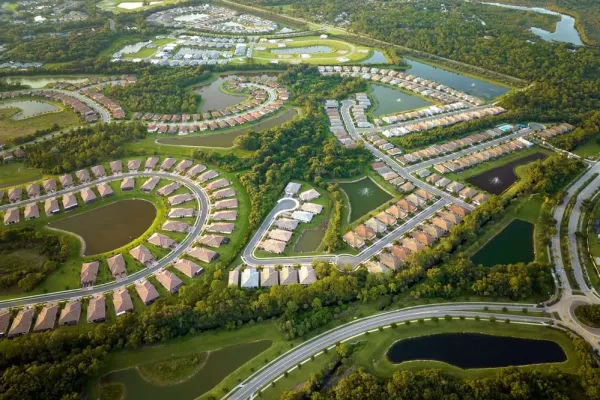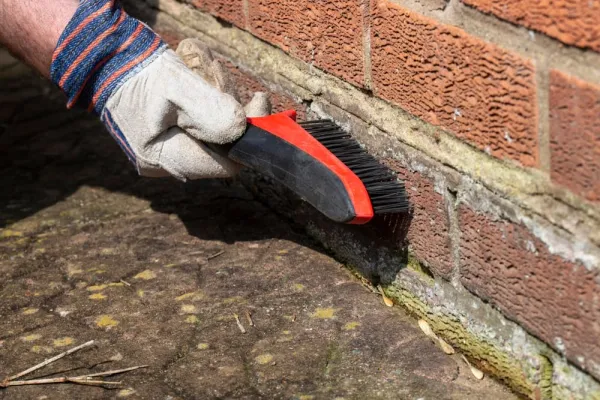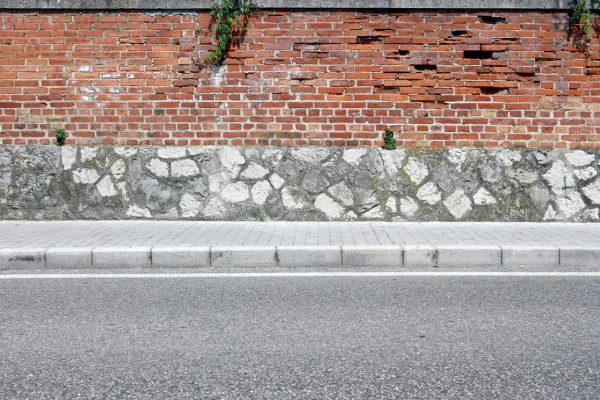Brick and stone are two of the UK’s most common materials for house construction.
Each material requires unique building methods and has a unique appearance.
But there are plenty more factors to consider, such as:
- Durability
- Cost
- Future sourcing
- Functionality.
And more.
Read on to find out more.
What is a brick house?
A brick house is made entirely or mainly from bricks.
Building done this way is often referred to as traditional construction because of how popular and widespread it is.
Brick houses usually have two layers of brick for each wall. A gap exists between the two layers, usually filled with insulation.
And the whole structure is built on top of concrete foundations.
What is a stone house?
A stone house is one of the main alternatives to brick.
It’s often seen in older properties. This includes the oldest standing house in the UK: the Knap of Howar in Orkney (built approximately 5,700 years ago!)
Despite this, stone is known as a ‘non-traditional’ construction method because it is not used often today because of its relative expense.
How common are brick and stone houses?
Brick construction is far more common in the UK than stone. That’s why brick is known as a ‘traditional’ construction method, while stone is ‘non-traditional’.
Unfortunately, not many figures are available to show the exact proportions of each construction method.
You are more likely to find stone properties in rural areas. However, there are also often more brick properties than stone ones in the same places.
Advantages and disadvantages of a brick house
Advantages
A major advantage of a brick house is that it is durable against harsh elements, such as wind and rain.
Many UK builders are experienced in brick construction.
So consumers have more options if they want to repair or even have a house constructed, and prices are more competitive.
It’s also relatively easy to find and buy a brick house that suits your location, size and style preferences.
After all, most properties – and all different types of properties – in the UK are made from this.
Brick houses are often relatively energy efficient, which helps them retain or increase their value well.
Disadvantages
Brick houses take longer to construct than some other methods, such as timber frame.
This means that if you’re building the house from scratch, the project can take at least one month longer.
Brick houses arguably give you less options when it comes to style. There are relatively few ways to shape or size brick houses.
Brick colours are relatively limited, tending only to be cream, brown, or grey. (Of course, you can paint them.)
And bricks from different manufacturers can have subtle but noticeable differences. So, it can be difficult to source the original brick when you want to extend or remodel your brick house.
Advantages and disadvantages of a stone house
Advantages
Property sellers often find high interest in stone houses.
As a building material, it enables homes to have unique interior features and layouts.
You can also find stones in a huge range of sizes, colours, and types, including:
- Limestone
- Sandstone
- Quartzite
- Granite
And more.
Stone is great at retaining heat. This warmth is then slowly released throughout the nighttime. Your house thus needs less heating.
It’s also very durable. This means the age of your house is less of a concern than with houses of other materials.
Disadvantages
Building with steon is considered a ‘non-traditional’ construction method in the UK. This means that some banks will be reluctant to lend money for it.
Constructing a stone house is relatively expensive, find fewer builders with expertise in this area.
When you live in a stone house, it can get colder during the winter months.
(You’ll often find that stone houses have fireplaces for this reason, but you can also add other forms of insulation.)
Alternatives to brick and stone house
Brick is known as a ‘traditional’ construction method in the UK. This means that all other types of construction, including stone, are ‘non-traditional’.
Concrete
Concrete is a major example.
It was commonly used in the UK in the 20th century, until it was discovered in 1980s that many of the council houses built from concrete were structurally defective.
They’ve become less popular ever since.
Timber frame
Timber frame properties are another alternative. These have a striking appearance and are still used in construction projects today.
Unfortunately, this material is vulnerable to rot and moisture, which is common in the UK.
Wood
Wood construction is not unheard of, either. It’s particularly common across the pond in the United States.
You generally need planning permission from a council to build this type of house.
This is partly due to its vulnerability to the elements, especially fire. Many banks won’t lend money on this in the UK.
Should I get a brick or a stone house?
If you’re looking to buy a house, you’ll have far more options that are brick houses.
These properties are common in the UK and banks will happily lend on them.
Stone houses are rarer and often fit into the higher price bracket. You’ll struggle to find many stone houses priced at less than £500,000.
So if you’re on a smaller budget, brick is almost certainly the way.
You should consider the preferences of your lender. Are they willing to lend on a stone house? If so, and you’ve found a house that’ll be perfect, then there’s no reason not to press ahead.
Just remember that stone houses can cost more to heat up during the winter months. By contrast, brick properties tend to be better insulated.
















